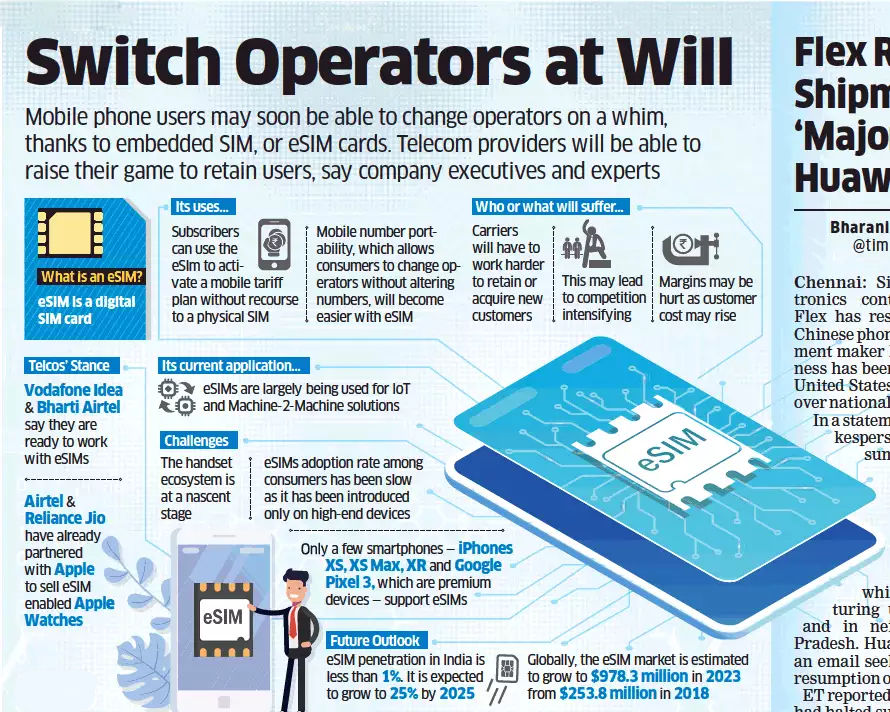Science & Technology
eSIMs Technology
- 21 Sep 2022
- 3 min read
For Prelims: eSIMs Technology, Technology related to Telecommunication.
For Mains: Advantages and Disadvantage of eSIM Technology.
Why in News?
Apple Inc., an American multinational technology company, has come up without a physical SIM slot or an eSIM in order to access mobile networks.
What is an e-SIM?
- eSIMs were first established in 2012.
- It is an embedded SIM, which is permanently embedded in the same hardware of a regular sim card chip.
- Just like a traditional SIM card, an eSIM also consists of some components, which are part of a phone's internal organs. They also function the same way, acting as a unique identifier for telecom operators and other consumers to reach your exact smartphone when they make a call or send a text.
- However, being attached to the motherboard also allows re-programming, letting users switch operators without having to replace any physical SIM cards.
What are the Advantages?
- Security:
- An eSIM provides security to sim theft, as there is no physical element to pull out and use in another device.
- Attackers cannot use your phone after being robbed to breach your social media or bank accounts.
- One less opening on your phone:
- One less opening on the frame of your phone reduce the likelihood of elements like dust and water entering the phone.
- It also saves some space on the inside of the phone to be used elsewhere.
What are the Disadvantages?
- Emergencies:
- If your phone stops working, runs out of battery or simply falls and gets a cracked screen, your communication is brought to a complete standstill with eSIMs. Traditional SIMs, meanwhile, can be quickly pulled out of the affected phone and into another backup device or secondary phone.
- Unusable in countries with no eSIM support:
- eSIM phones cannot be used in a country where the telecom operators simply don’t support the technology yet.
- This isn’t an issue if your phone supports both eSIM and traditional SIMs, but is a problem on devices like the US-version iPhone 14, which will solely rely on eSIM alone.
- Telcos have more control:
- An eSIM may save one’s initial trip to the telecom operator’s store to get a SIM card, but one has to rely on the operator while switching one’s phone.
- Operators may charge extra for eSIM plans or for switching phones, in the future.





